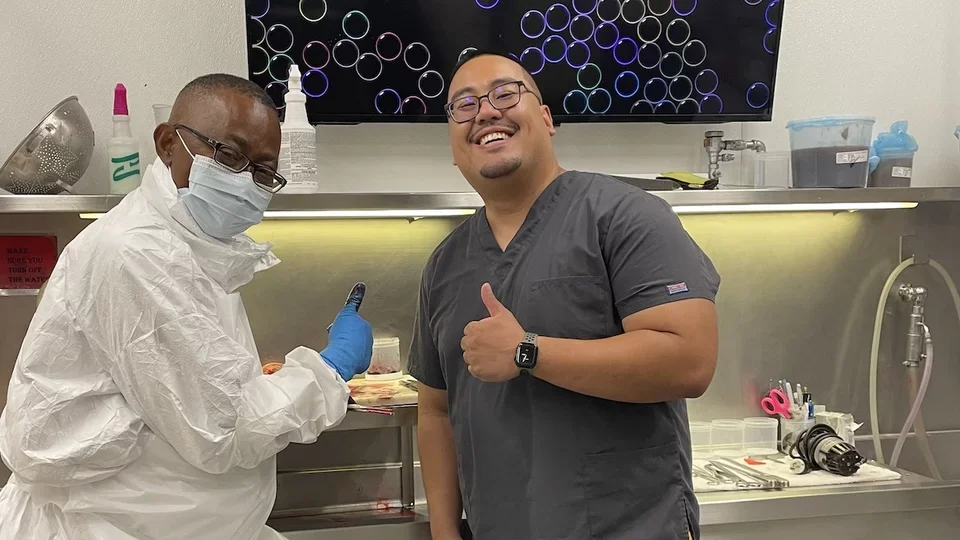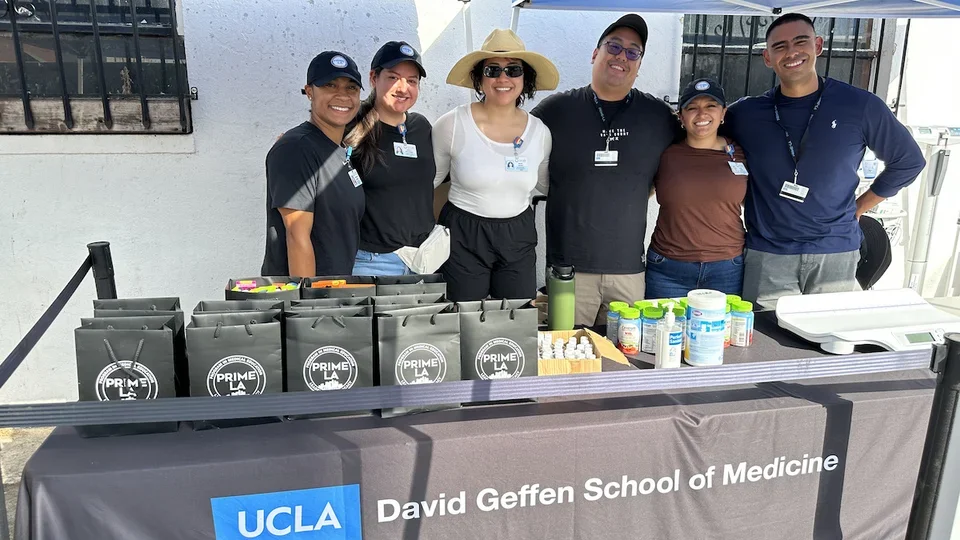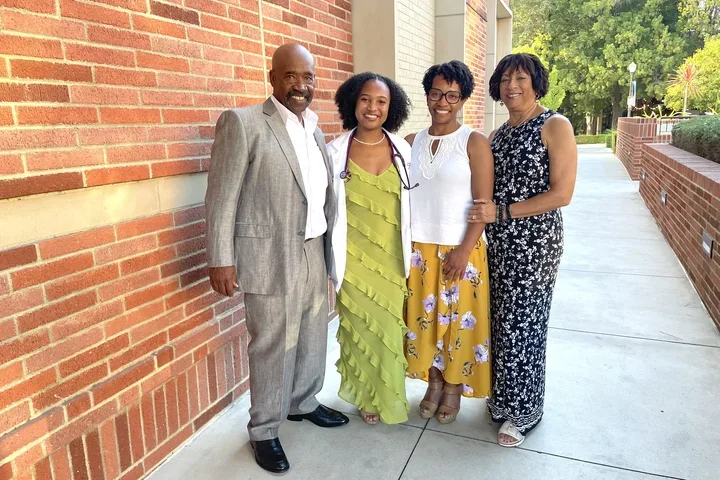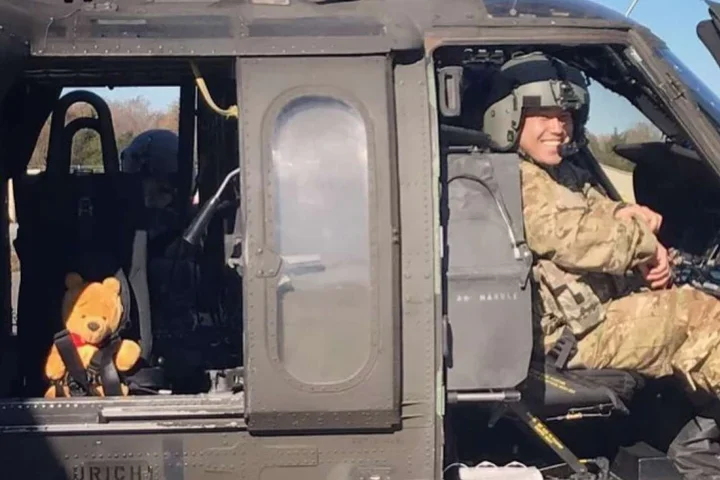From the Coroner’s Office to Med School: One Student’s Unique Journey
Student Spotlight

Meet Mario Eusebio
Medical student Mario Eusebio (class of 2027) immigrated from the Philippines to California’s Bay Area when he was five years old. He got to know the individuals in his diverse new community by delivering newspapers. This experience taught him a lesson he’ll never forget: If you want to learn about someone’s culture, you either learn to cook their food or to speak their language.
Not much of a chef, Mario focused on bonding through language.
“I learned the importance of connecting with individuals and how crucial language—even just trying to speak someone’s language—was in making those connections.”
Today, he has skills in Spanish, Tagalog, Japanese, and American Sign Language. He plans to keep learning more, so he can connect with as many people as possible.
When not delivering newspapers or practicing new languages, Mario worked toward his childhood dream of becoming a professional basketball player—until a torn anterior cruciate ligament (ACL) ended his career on the court. The injury had a silver lining: Mario started working at his local library, where he became passionate about education.
“I ended up reading for the first time,” he recalls. “And not just because someone at school told me to.”
He worked his way through the library shelves, reading everything from “The Hitchhiker’s Guide to the Galaxy” to “War and Peace.” He found “The Autobiography of Malcolm X” particularly influential. It showed him he wanted to not only gain, but also share knowledge.
“You can get knowledge from all these places, but it really doesn’t mean anything if you can’t share it with the people who need it the most.”
Fun fact: Mario practices a variety of martial arts, and teaches the Filipino Martial Art, Eskrima Serrada. It helps him feel connected to his culture and informs his medical practice by building his ability to stay focused under pressure and to interpret non-verbal communication.
Medicine as a Tool for Change
Mario began his medical education at community college. Only seventeen years old with plenty of time ahead of him, he planned to start his health career in nursing and work toward becoming a doctor later. However, one experience after another made him eager to pursue his end goal without delay.
One pivotal moment happened during anatomy class.
“The first organ I ever took out of a human body was a heart.”
He found the heart fascinating. It had an old pacemaker he traced through the subclavian arteries. It had hypertrophic cardiomyopathy and aortic valve stenosis. Considering all the heart’s pathologies, Mario felt awed by the medical interventions that had kept it working in a live human being.
The illuminating dissection led Mario to a job assisting forensic pathologists at the Contra Costa County coroner’s office. The work fed his interest in becoming a doctor, but it also caused him personal pain.
“A majority of cases I saw were individuals who looked like me, who were coming from under-resourced backgrounds and were dying because of preventable causes,” Mario says
Coming face to face with these cases instead of reading about them in textbooks reinforced Mario’s resolve to make an impact by becoming a doctor.
Mario’s future physician brain analyzed cases in reverse. He often wondered what interventions would have been necessary to stop an individual from ending up with him in the coroner’s office.
His pathological reflections made him interested in one day specializing in orthopedic surgery, trauma surgery, or forensic pathology. For now, he’s enjoying exploring all the new knowledge open to him as a medical student at the David Geffen School of Medicine at UCLA (DGSOM.)

Life as a Medical Student
Mario, part of the PRIME-LA concurrent/dual degree program for future leaders focusing on healthcare for the underserved, loves being a full-time student.
“I don’t have to work,” he says. “My job is to work to become a physician. This is the first time in my life I’ve been able to focus on school specifically.”
By the time he matriculated at medical school, Mario had built up an extensive resume: Working at the coroner's office, scribing for a range of different medical specialists and practices, doing research Children’s Hospital of Oakland Research Institute (CHORI), and holding positions in the public health, higher education, and nonprofit sectors.
He’d touched many patient cases, charts, and records before coming to medical school. He says none of that fully prepared him to see patients.
“You can talk to individuals about health problems, but it’s very different to see those pathologies first hand,” he says, explaining the novel sense of privilege he felt to take responsibility for healing patients.
Entering new territory stirs up new worries.
“I fear I might have a patient, and it ends up being my fault that they end up on the coroner’s table.”
He calms his fears by reminding himself that he, and all physicians, are human beings. Human beings might make mistakes, but they can also do so with grace, never allowing fear and indecision to paralyze them when their patients need them most.
Mario considers working through this initial fear of mistakes part of learning to become a physician.

The “Why” Behind Mario’s Medical Dreams
Mario has a key message he wants his future self, the one preparing to graduate from medical school, to keep in mind.
“You can dream, but don’t neglect the execution,” he says. “You have lofty goals and ambitions, and you need to think clearly about the detailed steps that will get you there.”
The same central motivation that first kindled Mario’s interest in becoming a physician still informs all his future plans: Giving back.
He wants to give back to the communities that raised him and give his knowledge to future generations, especially students that identify as first generation or pre-med transfer students.
“One of my goals is to teach them early what I learned late, so they don’t have to make the same mistakes.”
He wants to show these students that they can make it to medical school, that they can become physicians. His ambitions go beyond providing encouraging words. He wants to develop resources, such as early pathway programs, to help them navigate their unique paths to medical school.
These goals all branch from the desire to share knowledge Mario first felt after reading “The Autobiography of Malcolm X.” Since that moment, he’s experienced the rewards of sharing from both sides, receiving guidance from influential mentors and instructing anatomy students as a teaching assistant.
In giving back and sharing knowledge, Mario found a why to keep him going through all the challenges of medical training.
“One who has a why can endure any how.”



